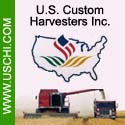Researchers Develop New Test for Avian Flu Detection
USAgNet - 06/03/2025
Highly pathogenic avian influenza (HPAI) reached Antarctica's mainland in early 2024, leaving Australia, New Zealand and Pacific Island nations as the only regions on Earth that remain free from the H5N1 strain.
Purdue University researchers now have developed an innovative, paper-based diagnostic test for rapidly detecting avian influenza, the main cause of recent high egg prices. This novel test addresses the urgent need for an efficient and cost-effective surveillance
tool to combat the global threat posed by avian influenza viruses, said Mohamed Kamel, a Purdue postdoctoral research associate.
This assay is suitable for use in field settings, including areas with limited access to advanced laboratory facilities. Kamel and four co-authors published the details of their new assay in the journal Scientific Reports.
A key advantage of the test is potential use across a variety of species, said lead author Mohit Verma, associate professor in the Purdue Department of Agricultural and Biological Engineering and the Weldon School of Biomedical Engineering.
"It works by using an oral or nasal swab from an animal or human and then transferring the sample to the paper-based devices," Verma said. The test should work across different livestock (poultry, dairy) and wildlife (birds, rodents), as well as humans.
"The role of avian flu, particularly highly pathogenic avian influenza, in contributing to the high cost of eggs now and in the future can be understood through its impact on the poultry industry," Kamel said. In 2022, avian influenza outbreaks affected 67 countries
and resulted in the loss of 131 million domestic poultry. U.S. losses totaled 40 million animals and $2.5-3.0 billion.
"Such large-scale losses in poultry directly reduce the supply of eggs, which can drive up prices due to decreased availability," said Kamel, who is also a faculty member at Cairo University in Egypt.
Other factors add to the costs. Farmers must implement rigorous and expensive protective measures. These include enhanced sanitation, restricted farm access and separation of wild and domestic birds, he noted. And the need for stringent biosecurity measures
and trade restrictions following avian influenza outbreaks can further strain the market.
- Gov Shutdown Hits Crucial Tools for Farmers, Traders
- Students to Take Part in Gateway to Ag Careers Program
- ChapterBoost Connecting Donors to FFA Chapters
- BASF Announces EPA's Approval of Zorina Fungicide
- Canadian Farm Equipment Sales Reported Higher
- Fertilizer Outlook Shows Global Risk, Higher Costs
- Pork Producers Pushing for Fix to Prop. 12



